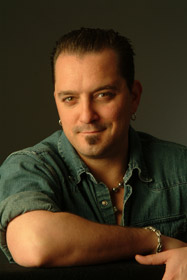Welcome to the second part of this interview with Blizzard VP of Creative Development Chris Metzen. If you haven't already read Part One be sure to check it out to hear about the power of spinning ideas, and how Metzen got his big break on a bar napkin.
 Welcome to the second part of this interview with Blizzard VP of Creative Development Chris Metzen. If you haven’t already read Part One be sure to check it out to hear about the power of spinning ideas, and how Metzen got his big break on a bar napkin.
Welcome to the second part of this interview with Blizzard VP of Creative Development Chris Metzen. If you haven’t already read Part One be sure to check it out to hear about the power of spinning ideas, and how Metzen got his big break on a bar napkin.
What do you think are the ingredients of good storytelling in computer games?
You definitely want “show — don’t tell.” And it’s difficult in interactive spaces because “showing” usually means it’s very keyed into specific art resources or the way your game engine works. Also, more often than not, you don’t want to stick the player with minutes worth of exposition. Ultimately, it’s a video game and people are conditioned to want push buttons or click their mouse. Whether they’re playing Pac-Man or Half Life 2 or World of Warcraft, they want to feel like they’re in the driver’s seat — that’s the difference between the interactive medium and film, for instance. In film you’re pretty much a captive audience. You’re going to sit there for two hours and experience what the writer and the director and the actors want you to experience. You have very little say in the matter other than how you process it after the fact, right?…. [So] even if we take control away from you for a couple of minutes to show a pre-rendered cinematic, or a cinematic sequence that shows the next story note unfolding, we want to get people back into the action as soon as possible. And that determines the way your story unfolds. You have to tell it in bite-sized chunks because you know that control must resume for the player pretty soon.
How do you typically kick ideas off?
CM: I just get geeked up walking into a room where we all sit down and jam. (I use the term “geeked up” a lot — like you’re just out of your mind for an idea.) I’ll throw out an outline of, “Here’s where I’d like to go” or “Here’s a rough painting.” And then we’ll all sit around and absolutely sculpt a grander vision. My ideas are usually kind of the initial spark, but I’m surrounded by a really good team. We’ve been doing this for a long time together. Instincts are honed and there’s a great chemistry, so these guys wind up taking ideas and just running all the way down the field with them.